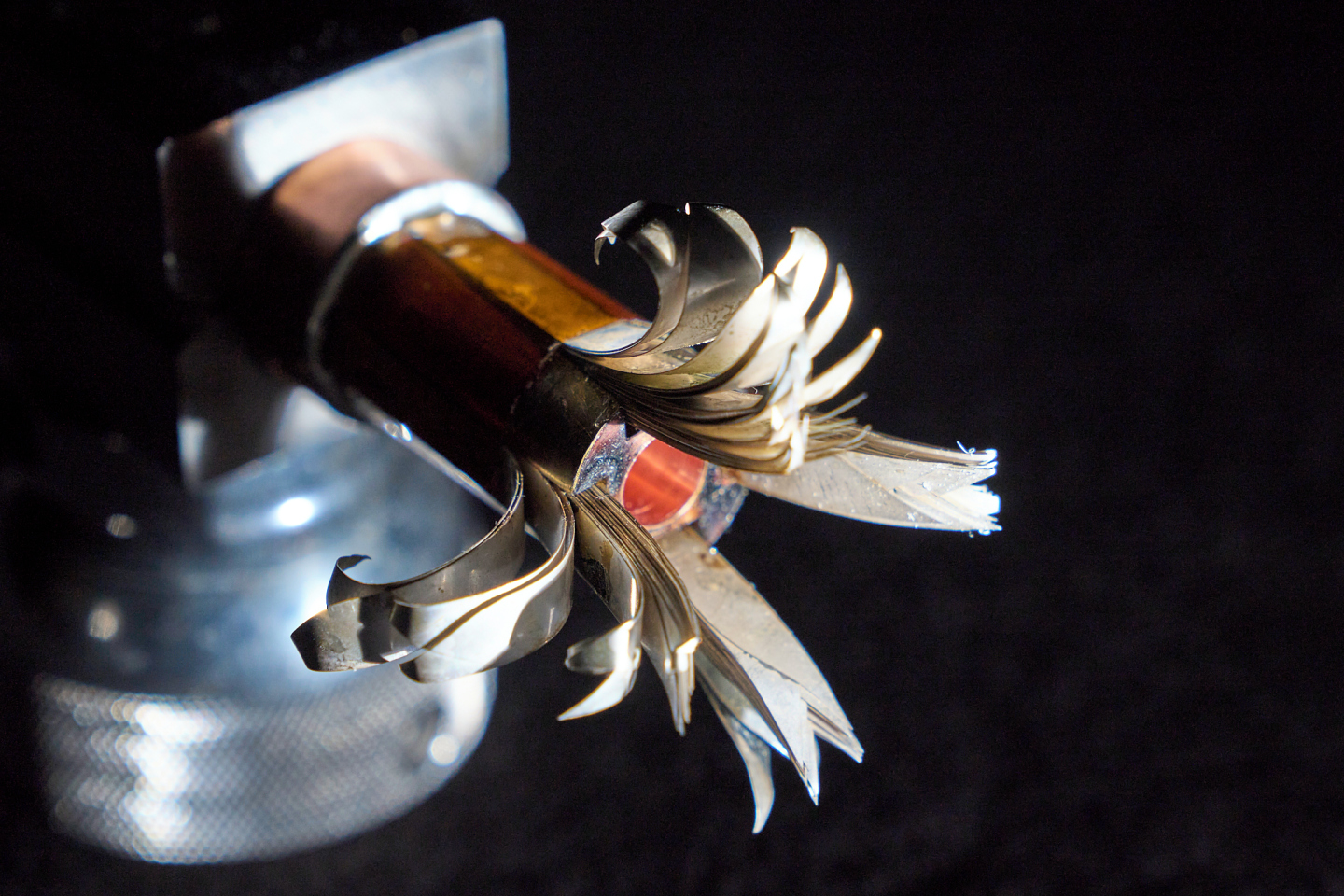
This high-temperature superconducting (HTS) cable, developed at CERN, is inspired by those developed for advanced nuclear fusion reactor concepts. It consists of a hollow copper profile with twisted grooves containing stacks of soldered HTS tapes (shown opened in a "flower" shape in the image). (Image: CERN)
CERN's accelerator experts and EUROfusion's nuclear fusion specialists are now working jointly to develop innovative technologies for future colliders and nuclear fusion reactors, drawing on their respective unique competencies, in particular in the area of high field magnets.

The common projects are facilitated by the collaboration agreement that was signed in November 2023 by CERN and members of EUROfusion, the European consortium of fusion research laboratories carrying out a technical design of a fusion demonstration power plant (DEMO) to succeed ITER.
Marking a milestone in scientific cooperation, this partnership paves the way for joint ventures in a broad spectrum of areas, encompassing research and development in physics, engineering and technology. It focuses on the engineering design and construction of significant scientific experiments and instruments.
CERN established a dedicated fusion technology coordination unit in 2023 with the involvement of accelerator and knowledge transfer experts, reflecting the Organization's commitment to fostering collaboration across multiple scientific disciplines. The agreement signed between EUROfusion and CERN is a prominent example of the unit's activities.
"There are clear synergies in the development of technologies for nuclear fusion and those for future colliders, particularly with regard to the use of high-temperature superconducting (HTS) conductors. In the ideation of DEMO, the demonstration fusion power plant that will succeed ITER, the choice of tokamak central solenoids using HTS materials is being explored by a number of EUROfusion members", says Gianfranco Federici, Head of the EUROfusion Fusion Technology Department. "The collaboration agreement provides a platform for all of our members and CERN to collaborate and create a centre of excellence for fusion technology".
Central to this alliance, the inaugural project initiated this year is envisioned as a crucial step towards a future testbed for tritium blanket technology. It is scheduled for completion by the end of 2024. "The teams at CERN and EUROfusion are engaging in fruitful exchanges concerning magnet concepts and designs based on high-temperature superconductors. The extraordinary challenges posed by the magnets of a muon collider require the development of new concepts, some of them similar to those of fusion machines. This is particularly true for the target solenoid, a key component of the collider, which needs to reach a very high field, is subjected to large heat and radiation loads and is likely to be built with HTS conductors", says Luca Bottura, who is leading the magnet design efforts of the International Muon Collider Collaboration and the magnet work package of the EU MuCol design study.
Recently, the scope of the collaboration has been extended to include cooperation on advanced shielding materials, of interest both to fusion and accelerators. This topic will be the focus of a joint workshop, which is due to take place later this year.






